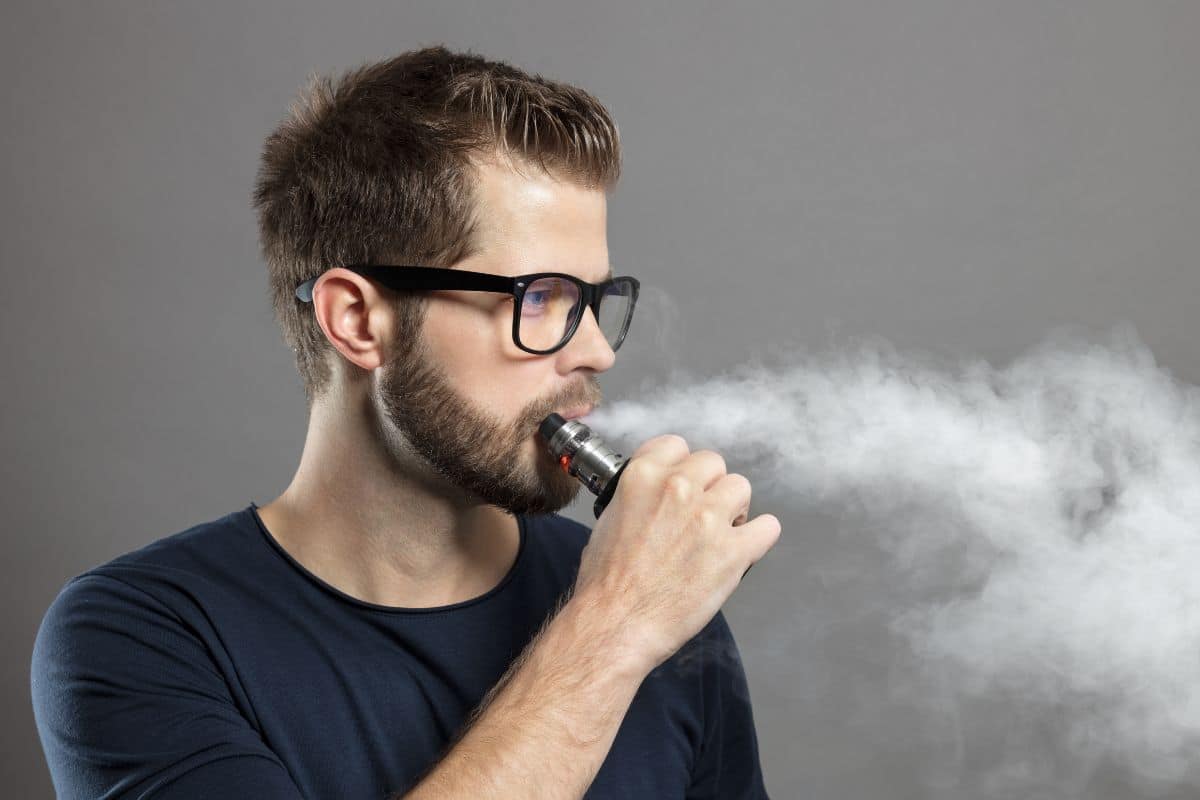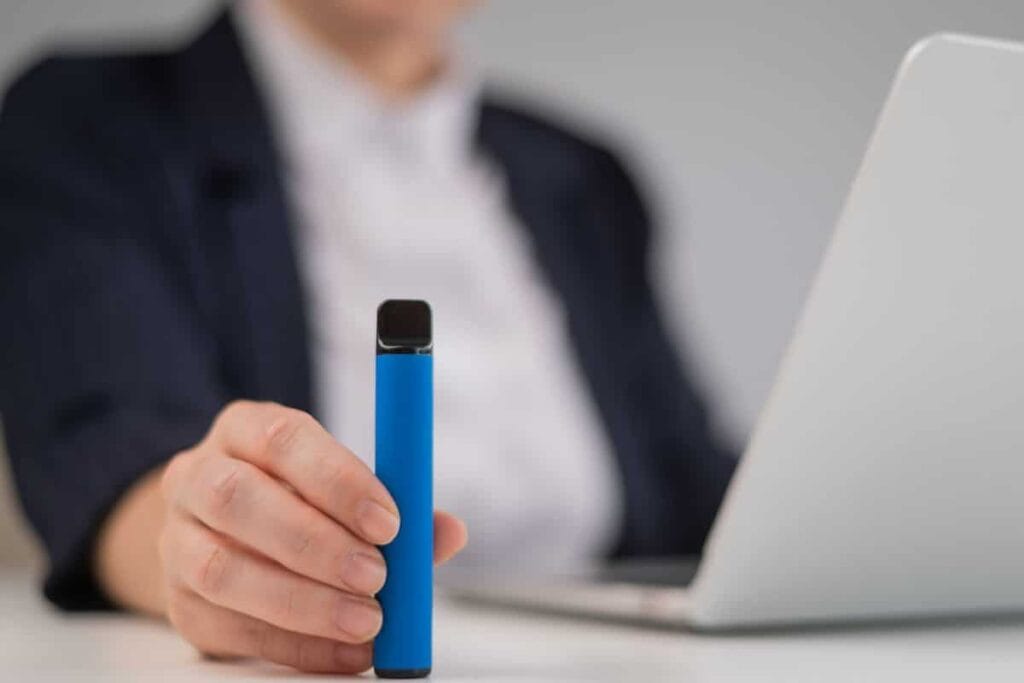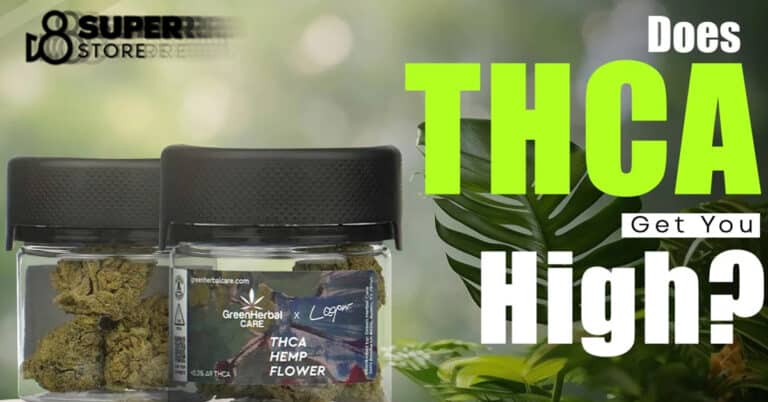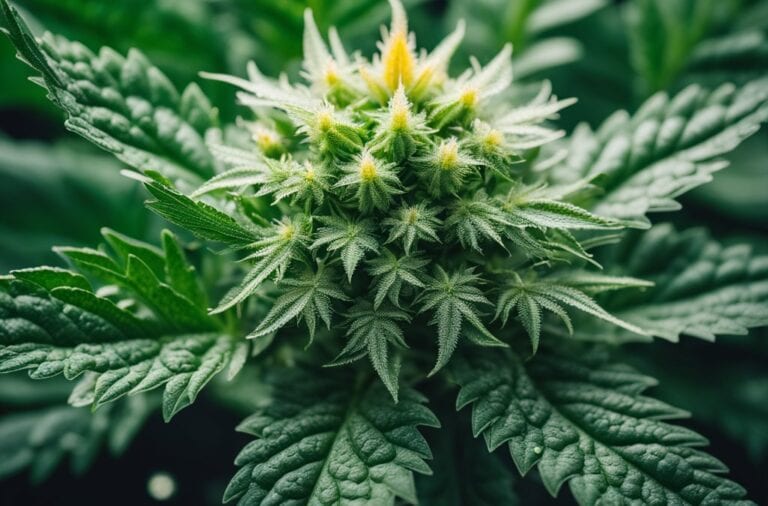What is D9O: A Comprehensive Overview
**D9o** is slowly becoming a big deal in the cannabinoid scene, lighting up conversations with every discovery. Folks can’t stop chatting about the top methods to pull it out, mix it up, and the incredible perks it might bring. It’s super important for folks looking to buy and the curious scientists to really get the scoop on this compound, from the legal stuff to how you should use it. Why hang around here? You’re about to dive into some of D9o’s best-kept secrets, the kind of info not many know. Get ready to be that person everyone wants to talk to, sharing the coolest facts!
Various methods of consumption and product types exist for d9o, further expanding its appeal to a broader audience. A deeper understanding of its interactions and mechanisms can help individuals make informed choices about incorporating d9o into their wellness routines. As the market for d9o continues to grow, keeping up with popular brands and frequently asked questions can prove beneficial for both the industry and its consumers.
Key Takeaways
- D9o is a lesser-known cannabinoid with potential benefits, requiring further research.
- Various consumption methods and product types exist for d9o, making it more accessible to a wide audience.
- Staying informed about d9o’s legal status, usage guidelines, and popular brands can help consumers make educated decisions.
What is D9o
D9o, also known as Delta 9 THC-o or Delta-9 THC-o, refers to a hemp-derived cannabinoid called Delta-9 THC-O-Acetate. This compound is a synthetic analogue of the well-known Delta 9 THC, which is a dominant psychoactive component of cannabis. Delta 9 THC-o shares similarities with Delta 9 THC in terms of chemical structure and properties, but due to its unique acetate form, it exhibits certain differences in its effects and applications.
Delta 9 THC-O-Acetate is synthesized from the original Delta 9 THC molecule through a process called acetylation. This process involves the addition of an acetate group to the molecule, which transforms it into a more potent and faster-acting substance. The resulting compound, Delta 9 THC-O, demonstrates enhanced psychoactive effects compared to Delta 9 THC, making it a distinct cannabinoid of interest for both recreational and medicinal users.

As a hemp-derived cannabinoid, Delta 9o is generally considered to be legal under the 2018 Farm Bill, which legalized industrial hemp and hemp-derived products containing less than 0.3% Delta 9 THC on a dry-weight basis. However, due to the evolving regulatory landscape and the synthetic nature of Delta 9 THC-O-Acetate, it is essential for consumers and industry professionals to remain aware of specific state and federal laws concerning cannabinoids and their derivatives.
In terms of psychoactive effects, Delta 9 THC-o has been reported to possess a unique profile. Some users have described the experience as more cerebral, spiritual, and introspective compared to the effects of Delta 9 THC. This compound’s intensified potency and distinctive effects make it a novel option for those seeking alternative cannabinoids or enhanced experiences. However, further research is needed to fully understand the safety, efficacy, and potential medical applications of Delta 9 THC-O-Acetate.
Given the emerging nature of the Delta 9o market and the ongoing research surrounding cannabinoids, potential users should approach this compound with caution and make informed decisions. It is crucial to purchase Delta 9 THC-o products from reputable sources and consult with a healthcare professional before incorporating Delta 9 THC-O-Acetate into a health or wellness regimen.
Extraction and Production
D9O production primarily involves the use of hemp, specifically industrial hemp, as it is a federally legal crop under the 2018 Farm Bill. The Hemp Improvement Act of 2018 promotes the commercial cultivation, processing, and marketing of hemp-derived products, paving the way for the extraction and production of D9O and other compounds.
The technology used in the extraction process is of utmost importance, as it ensures the safety, purity, and efficiency of the final product. One common method of extracting D9O from industrial hemp involves a chemical reaction that removes an acetyl group from the compound. This process, known as deacetylation, results in the conversion of the precursor compound into D9O.

During the extraction process, several factors need to be considered. These include the choice of solvents, temperature control, and duration of the extraction. Although various approaches to extraction can be employed, the goal remains the same: to produce a pure, high-quality D9O product with minimum impurities.
In summary, the extraction and production of D9O from industrial hemp involve a legally regulated framework and advanced technology to ensure the quality of the final product. The process primarily entails the deacetylation of precursor compounds, which, when executed effectively, results in a pure and potent D9O product.
Effects and Benefits
D9O, a compound known for its psychoactive properties, offers a range of effects and benefits for its users. Some of the primary effects include a sense of relaxation, euphoria, and an increased appetite. These effects make it particularly helpful for those seeking relief from anxiety, stress, and appetite problems.
When consumed, users often report experiencing a high characterized by feelings of relaxation and tranquility. This can be especially beneficial for individuals dealing with chronic stress or anxiety, as it can help them unwind and reduce feelings of worry or agitation. Furthermore, D9O is known to induce sensations of euphoria, which can improve mood and promote overall well-being.
A notable benefit of D9O is its ability to stimulate appetite. It can be particularly helpful for patients struggling with appetite suppression due to chronic conditions or medical treatments, providing them with a natural way to regain their desire for food and promote a healthier caloric intake.
Although D9O has a longer-lasting effect than other similar compounds, users should be aware of some potential side effects. Common side effects include dry mouth, red eyes, and dry red eyes, which are generally mild and manageable. However, some users may experience more adverse effects such as confusion, elevated heart rate, and even paranoia. It is important to use D9O responsibly and be mindful of any side effects experienced to ensure a safe and enjoyable experience.
Methods of Consumption
D9O, also known as Delta-9 THC, is a popular cannabinoid known for its psychoactive effects. It can be consumed in various forms, catering to the preferences and needs of different individuals.
One common method of consumption is vaping. Vaping involves heating the D9O extract to create a vapor, which is inhaled by the user. This is often done using devices such as vape carts, vape cartridges, and disposables. In addition to being discreet, vaping offers quick onset of effects and easier dosing control.
| Edibles provide an alternative for those who prefer or cannot smoke or vape. D9O can be infused into various food products, such as cookies, brownies, or even gummies. Edibles usually have a slower onset of effects as they need to be digested and processed by the body, but they can provide a longer-lasting experience compared to other methods. |
| Gummies are a popular choice among edibles due to their convenience, taste, and discreteness. They come in various flavors and can be easily portioned, making it simple to control dosage. Gummies provide the same benefits as other edibles but are more user-friendly and widely available. |
| Tinctures offer another method of D9O consumption. Tinctures are liquid extracts that can be administered sublingually (under the tongue) or added to food and drinks. The sublingual method allows for quicker absorption into the bloodstream, providing rapid relief. Tinctures also offer precise dosing and a discreet form of consumption. |
| Lastly, live resin is a concentrated form of D9O, produced by extracting the cannabinoid from fresh, frozen cannabis plants. This method preserves a higher concentration of terpenes and other cannabinoids, resulting in a more potent and flavorful product. Live resin can be consumed through vaping or dabbing, offering a highly concentrated and efficient experience. |
In conclusion, the various methods of D9O consumption cater to diverse preferences and needs. Some users may prefer the quick onset of effects provided by vaping, while others may appreciate the discretion and ease of use provided by edibles or tinctures. Whichever form one chooses, it’s essential to be aware of proper dosing and potential effects to ensure a safe and enjoyable experience.
Product Types and Varieties
In the ever-growing cannabis market, there is a wide range of cannabinoid products available for recreational and medical use. Each product may contain varying levels of active compounds, such as THC, CBD, and lesser-known cannabinoids like Delta-8 THC and HHC. These products offer a diverse range of experiences and potential health benefits.
Cannabinoid products can be derived from either hemp or cannabis plants. Hemp-based products are typically rich in CBD, a non-intoxicating compound known for its health benefits. These products may include oils, tinctures, topical creams, and capsules, as well as edibles and beverages. Hemp products are federally legal and do not cause a psychoactive effect, making them accessible and popular among medical users.
In contrast, cannabis-derived products contain higher levels of THC, the psychoactive compound responsible for the “high” typically associated with marijuana usage. Some of these products are purely recreational, like Delta-8 THC products, which can induce a milder, more clear mental state compared to traditional cannabis products. Meanwhile, others can provide medical benefits for users who require THC for pain relief or other conditions.
One lesser-known cannabinoid product is HHC, or hexahydrocannabinol, which is structurally similar to THC but often derived from the hemp plant. While still being researched for its effects and benefits, HHC may offer a mildly psychoactive experience with a focus on relaxation and bodily effects.
The product types mentioned above are only a few examples of the cannabinoid products available in the market. Some products may also contain a blend of various cannabinoids, such as CBD and THC, to achieve a desired effect called the “entourage effect,” where multiple compounds enhance each other’s effects. Additionally, the availability of these products may vary depending on local and regional laws, as well as individual preferences and needs.

Regulation and Legal Status
D9O, a hemp-derived cannabinoid, is subject to various regulations and legal statuses in the United States. The legal framework for hemp-derived cannabinoids has evolved since the passage of the 2018 Farm Bill, which removed hemp from the Drug Enforcement Administration’s list of controlled substances. This change effectively legalized hemp-derived products, including certain cannabinoids.
However, the legality of specific cannabinoids, like D9O, is still dependent on their source. The 2018 Farm Bill differentiates between cannabis plants, which are often associated with marijuana, and hemp plants, which contain less than 0.3% tetrahydrocannabinol (THC). As a result, hemp-derived cannabinoids are considered legal federally, while marijuana-derived cannabinoids are not.
In addition to federal regulations, individual states also play a significant role in determining the legal status of marijuana and hemp-derived cannabinoids. Some states have legalized recreational marijuana, while others maintain strict prohibitions on the substance. As a consequence, the legality of D9O may vary across states, even when derived from hemp.
Furthermore, the complex legal landscape of cannabinoids requires businesses and consumers to remain vigilant regarding the distinctions between hemp and marijuana-derived products. While both types of cannabis plants can produce similar compounds, the legal status of these compounds primarily hinges on their source.
In summary, the legal status of D9O as a hemp-derived cannabinoid depends on the interplay between federal and state regulations, and the distinction between hemp and marijuana. Following the 2018 Farm Bill, hemp-derived products have gained significant traction, but it is important for businesses and consumers to be aware of the varying legal statuses associated with cannabinoids derived from different sources.
D9o vs Alternative Cannabinoids
D9o, also known as delta-9 THC, is the main psychoactive compound found in the cannabis plant. It is among the most well-known and researched cannabinoids, responsible for producing the “high” sensation commonly associated with marijuana use. However, it is not the only cannabinoid found in the cannabis plant. Alternative cannabinoids like CBD, THC-P, and others also hold significant benefits and properties worth exploring.
CBD (cannabidiol) is a non-psychoactive cannabinoid found in cannabis, well-known for its potential therapeutic effects. It has gained popularity as an alternative to THC due to its benign side effect profile and lack of intoxicating effects. CBD is commonly used to address various medical conditions, such as pain management, anxiety, and neurodegenerative diseases 1.
THC-P (tetrahydrocannabiphorol) is another cannabinoid found in trace amounts in the cannabis plant. It is closely related to delta-9 THC but has been observed to be up to 30 times more potent 2. While research on THC-P remains limited, it represents an intriguing area of study regarding its potential therapeutic applications and potency.
The bioavailability of cannabinoids refers to the proportion of a consumed substance that enters circulation when introduced to the body. Delta-9 THC has relatively low bioavailability when consumed orally (around 6-10%), which increases to 30-40% when inhaled or vaporized 3. Alternative cannabinoids like CBD have similar limitations regarding bioavailability, with research indicating oral bioavailability between 13-19% 4. The bioavailability of THC-P is still under investigation, but like other cannabinoids, it may also face bioavailability concerns.
Tolerance levels play a significant role in the effects of cannabinoids. As a user’s exposure to delta-9 THC increases, their tolerance to its psychoactive effects also rises, potentially diminishing its therapeutic potential. In contrast, alternative cannabinoids like CBD do not produce a psychoactive “high,” and therefore, users may not develop the same level of tolerance. Studies regarding tolerance levels to THC-P are limited, but given its potency, it may be essential to consider when evaluating its effects.
In summary, while delta-9 THC is the most recognized cannabinoid, alternative cannabinoids such as CBD and THC-P offer unique properties and potential benefits. Differences in bioavailability and tolerance among these cannabinoids contribute to various effects and possible therapeutic applications, which warrants continuous research and exploration.
Usage Guidelines and Safety
D9O, as a hypothetical substance, requires proper usage guidelines and safety measures to ensure the wellbeing of those who might use it. Following a recommended dose is crucial for avoiding any potential side effects or health risks associated with the substance.
When starting with D9O, it is advisable to follow a “go slow” approach. This means using low doses initially and gradually increasing the dosage only when necessary. Monitoring one’s body and reactions carefully is essential for preventing a potential overdose. A conservative dosage guideline can help users remain within a safe range.
As every individual has unique body chemistry, consulting a physician before starting the use of D9O is highly recommended. A healthcare professional can provide personalized guidance on the appropriate dosage and consider the user’s medical history, age, weight, and any pre-existing health conditions when making recommendations.
In summary, adhering to usage guidelines and safety measures, such as following the recommended dose, starting with low doses, and consulting a physician, can help minimize potential risks and ensure the responsible use of D9O.
Interactions and Mechanisms
D9O interacts with the body’s endocannabinoid system, specifically the CB1 receptors. These receptors play a crucial role in regulating various physiological processes such as mood, appetite, and pain sensation. The mechanism of action for D9O involves binding and activating the CB1 receptors, which in turn modulates neurotransmitter release in the brain.
There are various strains of D9O, each with its unique chemical profile and effects on the body. Due to the differences in their compositions, these strains can have varying impacts on the CB1 receptors. Some strains may produce more potent effects, making them suitable for addressing specific medical conditions or symptoms. Understanding the interaction between the D9O strains and the CB1 receptors is essential for tailoring treatments to individual needs.
One of the key factors distinguishing the strains is the concentration of D9O and other cannabinoids present in the plant. Higher concentrations of D9O can lead to more pronounced effects on the CB1 receptors and thus produce a more potent therapeutic impact. In contrast, strains with lower D9O concentrations will have a more subtle effect on the CB1 receptors and may be better suited for individuals who require a milder approach to treatment.
In conclusion, the interaction of D9O with the CB1 receptors is a complex process that is influenced by variables such as strain composition and concentration. By understanding these mechanisms, researchers and medical professionals can better utilize D9O in designing effective treatments for a wide range of conditions.
Testing and Detection
The process of testing and detecting D9o in biological samples involves various techniques and methodologies to ensure accuracy. One significant aspect of this process is the drug test, which examines the presence of a substance in a person’s system, evaluating its metabolization, potency, and potential effects on the individual.
There are several types of drug tests that can detect D9o, such as:
- Urine test: The most common drug test that analyzes a person’s urine for the presence of D9o or its metabolites. It provides a relatively wide detection window and is non-invasive.
- Blood test: A more accurate but invasive test that examines the blood for D9o or its metabolites. This test can detect recent use and gives a better understanding of the current level of intoxication.
- Saliva test: A non-invasive test using a saliva sample to detect D9o or its metabolites. It provides a shorter detection window than a urine test but remains a convenient option for on-the-spot testing.
- Hair test: A test examining hair samples for the presence of D9o or its metabolites. This method offers a long detection window, sometimes detecting usage months after the substance was last consumed.
The process of metabolization plays a crucial role in drug testing. The body breaks down D9o into various metabolites, which may be present in the bloodstream or bodily fluids for an extended period. The detection time can vary depending on factors such as:
- The potency of D9o: Higher potency substances may require longer detection windows and more sensitive tests.
- The frequency of use: Regular users may have an increased level of metabolites, leading to a longer detection window compared to occasional users.
- Individual metabolism: Variations in how an individual metabolizes D9o or its metabolites can impact the accuracy of drug tests and detection timeframes.
In summary, testing and detection for D9o involves multiple drug testing methods, each with its advantages and limitations. These tests rely on the metabolization of D9o and take into account factors such as potency and individual metabolism rates. By employing accurate and effective testing procedures, the presence of D9o in the body can be confidently and knowledgeably determined.
Popular Brands and Market Players
When discussing d9o, it’s crucial to highlight some of the popular brands and significant market players in this industry. One of the leading brands in the d9o market is 3Chi, well-known for its innovation and commitment to providing safe, high-quality products. 3Chi offers a variety of delta 9 THC gummies in different flavors and potencies to cater to individual needs.
Reputable brands play a vital role in the d9o market, as consumers demand consistent quality and reliable products. These companies ensure their products are thoroughly tested and adhere to strict safety standards. As a result, customers can trust that they are consuming legal, safe delta 9 THC gummies.
Delta 9 THC gummies have gained popularity in the d9o market due to their ease of use, discrete nature, and enjoyable flavors. Several brands and market players have recognized this trend and developed an array of gummies to suit the diverse preferences of the user base. These gummies are made from high-quality ingredients and provide customizable doses for users, making them an attractive choice for d9o enthusiasts.
In summary, popular brands and market players like 3Chi contribute significantly to the growth and expansion of the d9o industry by offering safe, reliable, and enjoyable products. Delta 9 THC gummies continue to be a popular choice among consumers, and the presence of reputable brands ensures a well-regulated and trustworthy market for these products.
Frequently Asked Questions
Is D9O safe to use?
D9O is relatively new to the market, and research is still ongoing regarding its safety. It is essential to consult with a healthcare professional before using D9O, especially if you have any existing medical conditions or are taking medications.
What are the legal aspects of D9O?
Laws regarding D9O vary from country to country and even state to state. It’s crucial to be aware of the legal landscape in your area and stay informed about any changes or updates to regulations. Consult with local law enforcement or legal professionals for accurate information on D9O’s legal status in your area.
How does D9O compare to THC-O?
D9O and THC-O are both cannabinoids, but they have different chemical structures and effects. THC-O is known to have more potent psychoactive effects compared to D9O. Further research is needed to fully understand the differences and potential benefits of each cannabinoid.
What forms is D9O available in?
D9O is available in various forms, including oils, tinctures, capsules, edibles, and vape cartridges. The choice of the product may depend on individual preferences and desired effects.
What are D9O side effects?
As D9O is still relatively new, its side effects remain to be fully understood. However, some users have reported similar side effects to those experienced with THC, such as drowsiness, dry mouth, and feelings of intoxication. It’s essential for users to start with low doses and monitor their reactions when using D9O.
How does D9O’s potency compare to CBD?
D9O is thought to have a higher potency than CBD and potentially produce more noticeable effects. However, individual reactions to these cannabinoids can vary, and more research is needed to completely understand their potency and potential benefits.
Footnotes







